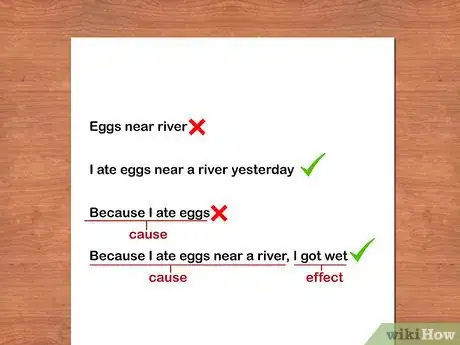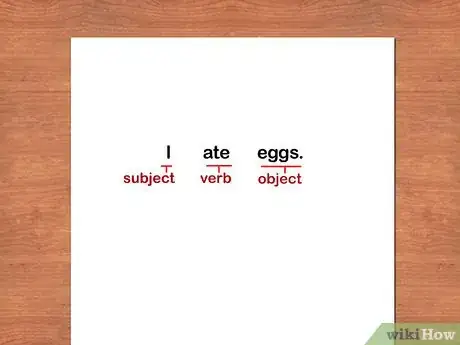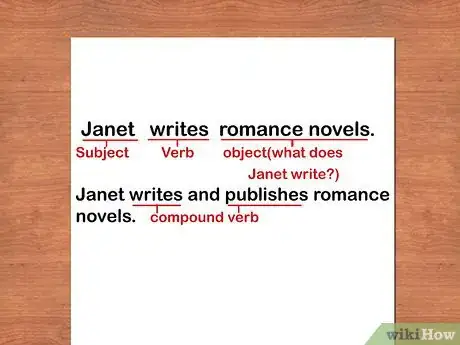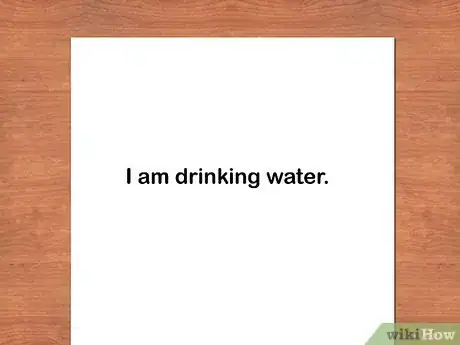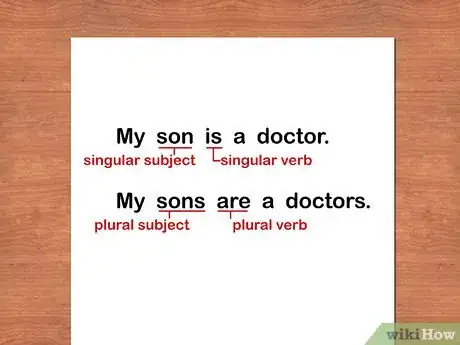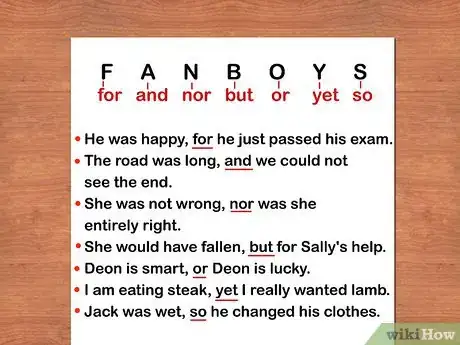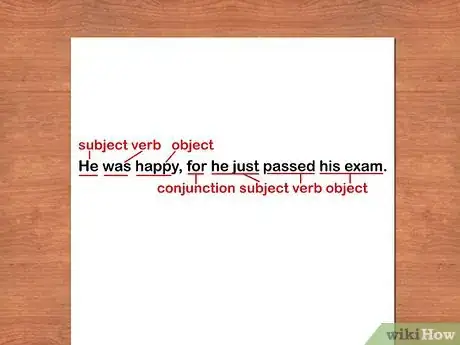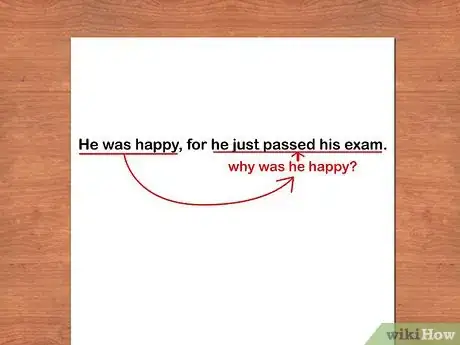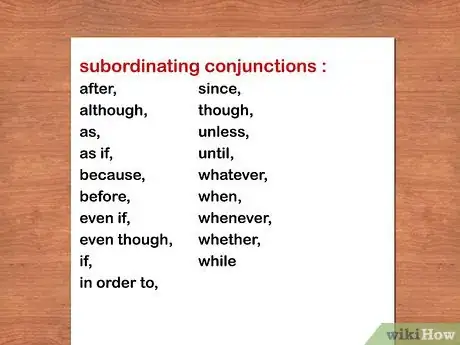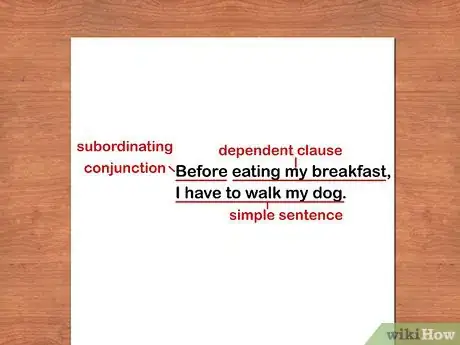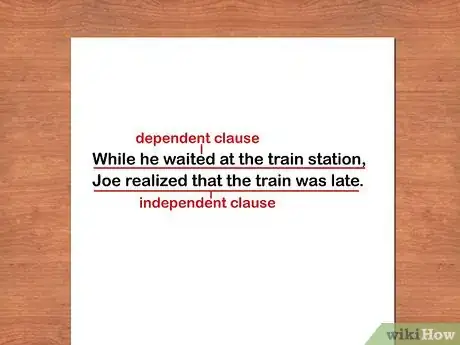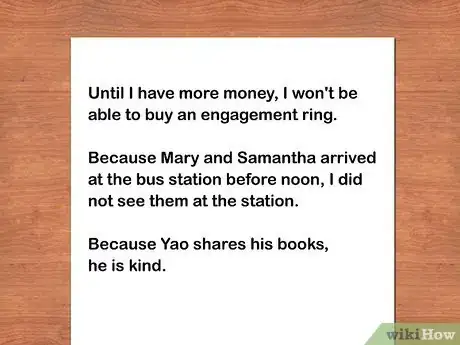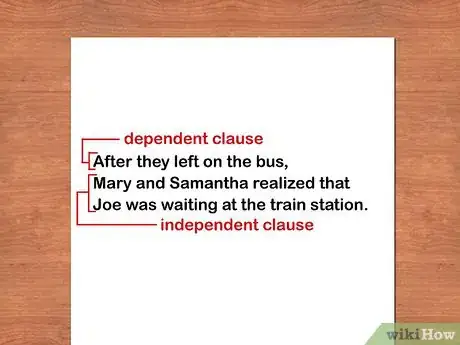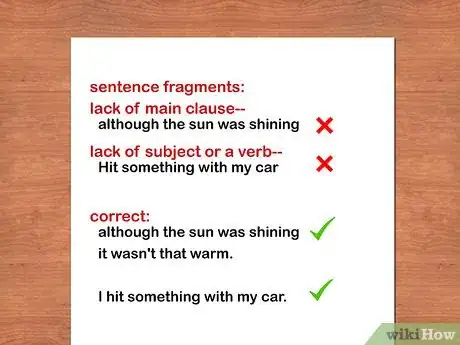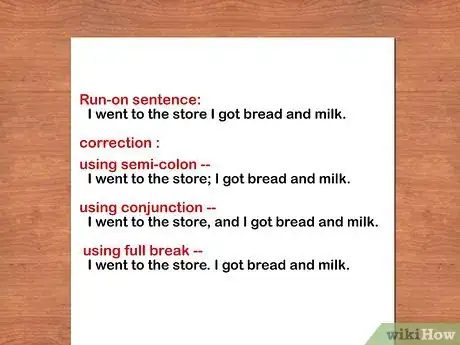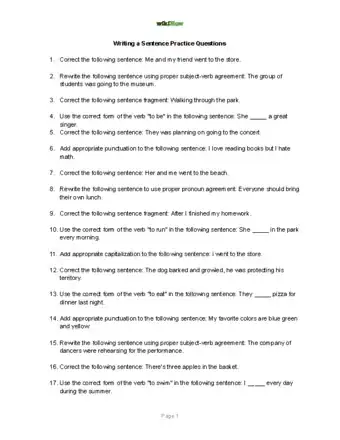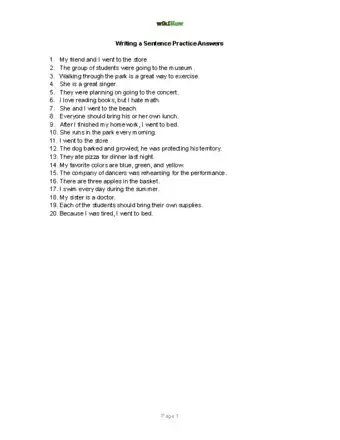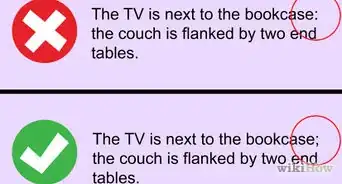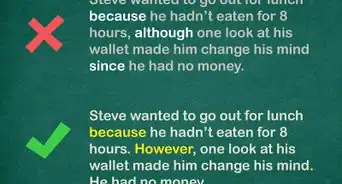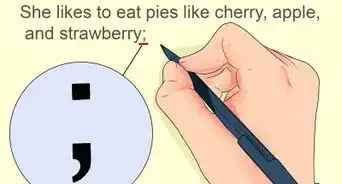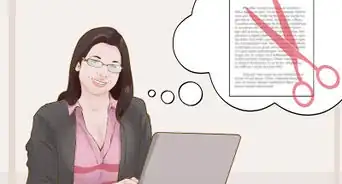This article was co-authored by Megan Morgan, PhD. Megan Morgan is a Graduate Program Academic Advisor in the School of Public & International Affairs at the University of Georgia. She earned her PhD in English from the University of Georgia in 2015.
There are 8 references cited in this article, which can be found at the bottom of the page.
wikiHow marks an article as reader-approved once it receives enough positive feedback. In this case, several readers have written to tell us that this article was helpful to them, earning it our reader-approved status.
This article has been viewed 240,890 times.
A well-written sentence is the foundation for both good writing and good written communication. There are several rules, as well as types of sentences, that a writer needs to be aware of in order to excel at writing, however. Once you have a grasp of the basic aspects of sentence writing, you will be on your way to becoming a great writer.
Steps
Knowing the Basics Before Writing
-
1Make sure your sentence expresses a complete thought. A sentence is a group of words that together express a complete idea that has meaning. When writing, it is a good idea to read your sentences aloud and ask yourself, "Does this sentence make sense? Does it express a complete idea?"[1]
- For example, "Eggs near river" is not a sentence because it does not express a complete idea.
- "I ate eggs near a river yesterday" is a sentence because it has a clear, complete meaning.
- "Because I ate eggs" is a sentence fragment because it is incomplete; "because" sets the reader up for a cause-and-effect, but there is no effect here.
- "Because I ate eggs near a river, I got wet" is a sentence because it completes the cause-and-effect established by the word "because."
-
2Use correct punctuation. Sentences in English begin with a capital letter and end with a punctuation mark. Proper terminal (end) punctuation includes a period (.), question mark (?) or exclamation mark (!). Punctuation marks inform the reader when your sentence is finished, as well as the tone of voice they should use when reading.
- An exclamation mark indicates surprise, whereas a question mark indicates confusion or questioning.
Advertisement -
3Include a subject and verb. A subject is a person or thing that is being discussed in the sentence. The verb is the action word, which describes what the subject is doing.
- For example, in the sentence "I ate eggs", "I" is the subject and "ate" is the verb.
Writing Simple Sentences
-
1Define a simple sentence. The simple sentence is the most basic of the sentences. It includes a subject, a verb, and it expresses a complete thought. This is known as an independent clause, because it can stand on its own.[2] Here is an example: "Janet writes."
- In the above example, the subject is "Janet". She is the person being discussed.
- "Writes" is the verb. It is the action that the subject (Janet) is doing.
- Remember, the subject can be a person (I or Janet), place (Baltimore or Bathroom), thing (Chocolate), or idea (Jealousy). [3]
-
2Make simple sentences a bit more informative. You can add direct objects and indirect objects to simple sentences to add more information. Here is an example: "Janet writes romance novels."
- The phrase "romance novels" is the direct object here: they are what Janet writes, so they receive the action of the verb.
- Simple sentences can also have compound subjects or compound verbs.
- A compound subject could look like this: "Janet and Sujata write romance novels." "Janet and Sujata" is a compound subject here, since there are two people doing the action.
- A compound verb could look like this: "Janet writes and publishes romance novels." Janet is doing two things here, writing and publishing, so this is a compound verb.
-
3Try writing a simple sentence. When you begin to write your own simple sentence, begin with the subject. Think about what the sentence is going to be about. Next, choose your verb. To do this, think about what the subject of your sentence is doing. Is the subject walking, running, reading, sitting, cooking, or something else?
-
4Pay attention to singular and plural subjects and verbs. When choosing your subject and verb, make sure that the two words agree in number. The rule is that a singular subject needs a singular verb, and plural subjects need plural verbs. [4]
- A singular subject and verb looks like this: "My son is a doctor".
- A plural subject and verb looks like this: "My sons are doctors".
Writing Compound Sentences
-
1Define a compound sentence. A compound sentence is made up of two simple sentences. The two simple sentences are joined by a comma (,) followed by one of seven words called coordinating conjunctions. The seven coordinating conjunctions are: for, and, nor, but, or, yet, so. To help you remember, use the mnemonic FANBOYS. Here are some examples of compound sentences. Note the use of the coordinating conjunction.
- He was happy, for he just passed his exam.
- The road was long, and we could not see the end.
- She was not wrong, nor was she entirely right.
- She would have fallen, but Sally helped support her.
- Deon is smart, or Deon is lucky.
- I am eating steak, yet I really wanted lamb.
- Jack was wet, so he changed his clothes.
-
2Try writing a compound sentence. Begin by choosing a subject and a verb for the first part of the sentence, the same way you did while writing a simple sentence. Next, choose the appropriate coordinating conjunction based upon the meaning of the sentence. Finally, choose a related subject and verb for the second part of the compound sentence.
- You may want to use "and" to express a continuing thought or meaning, or you can use "but" as part of an explanation. There are many possibilities.
-
3Pay attention to meaning when writing a compound sentence. By writing compound sentences, you can greatly expand on the meaning of the sentence when compared to a simple sentence. Be sure to use the second part of the sentence to expand or elaborate upon the thought expressed in the first part.
- Be careful not to overuse compound sentences, particularly those that use "and." They do not always indicate a clear relationship and may seem cluttered.[5]
Writing Complex Sentences
-
1Define a complex sentence. A complex sentence is made up of an independent clause and what is known as a dependent clause. A dependent clause is a group of words that contain a subject and a verb but do not express a complete thought by themselves. In other words, a dependent clause is not a simple sentence by itself.[6] There are several words, called subordinating conjunctions, that indicate the beginning of a dependent clause.
- Examples of subordinating conjunctions are as follows: after, although, as, as if, because, before, even if, even though, if, in order to, since, though, unless, until, whatever, when, whenever, whether, and while. [7]
- Examples of dependent clauses by themselves are as follows: "Because Yao shares his books", "Before eating my breakfast" and "Until I have more money".
-
2Join dependent clauses with a simple sentence. Notice that while the above examples of dependent clauses have a subject and verb, they do not express a complete thought. In order to express a complete thought, the dependent clause needs to be joined with a simple sentence. Here are some examples.
- Because Yao shares his books, he is kind. -or- Yao is kind because he shares his books.
- Before eating my breakfast, I have to walk my dog. -or- I have to walk my dog before eating breakfast.
- Until I have more money, I won't be able to buy an engagement ring. -or- I won't be able to buy an engagement ring until I have more money.
-
3Try writing a complex sentence. When writing a complex sentence, you need to combine one simple sentence with a dependent clause. Make sure you use the dependent clause to clarify what is happening in the simple sentence.
-
4Use complex sentences to better explain your thoughts. Complex sentences are useful because they often show a clear and specific relationship between the parts of the sentence. For instance, "before" tells readers that the dog needs to be walked prior to eating breakfast; "because" helps to explain why Yao is kind.
-
5Create periodic sentences. Periodic sentences begin with the dependent clause and end with an independent clause. You do not provide a comma before the dependent clause if the independent clause comes first. Commas are only used if the dependent clause is introducing the simple sentence.[8]
- Periodic sentences are great for building up tension or interest, since the the dependent clause "builds up" to the meaning or complete thought at the end.
- For example: "As I sat waiting in traffic, I realized I would be late for class."
Avoiding Common Mistakes
-
1Watch for sentence fragments. Sentence fragments happen when a dependent clause is made to stand on its own. They can also happen if a sentence lacks a subject or a verb.[9] Here are some examples of sentence fragments:
- "Although I was late to the party." The "although" here is what's known as a subordinating conjunction, and it creates a subordinate clause, which cannot stand on its own.[10] This is a fragment because it does not provide a complete thought; there's meaning here that isn't explained (Although...what?).
- "Hit something with my car." While you might use type of language in everyday speech, it's technically a fragment because it lacks a subject (who did the hitting). You could correct it as "I hit something with my car."
-
2Avoid run-ons. Run-on, or fused, sentences happen when you include more than one independent clause (a clause with a subject and verb that expresses a complete idea) in your sentence.
- For example, this is a run-on sentence: "I went to the store I got bread and milk." Each of the parts, I went to the store and I got bread and milk have a subject and verb, and each expresses a clear, complete idea.
- You can fix run-ons in a few ways. You can separate the clauses with a semicolon, or you can use a comma and a conjunction, or you can break the clauses up into separate sentences:
- I went to the store; I got bread and milk. The semi-colon shows the close relationship between clauses here.
- I went to the store, and I got bread and milk. This conjunction shows less of a close relationship than the semi-colon, but it communicates that they're connected ideas.
- I went to the store. I got bread and milk. This full break indicates that the ideas aren't all that related.
-
3Keep watch for comma splices. Comma splices are related to run-on sentences because they both improperly connect independent clauses. Comma splices are very common errors, but are often considered major errors by teachers.[11]
- For example, this is a comma splice: "I texted my friend, she didn't reply."
- Both of these are independent clauses, because they have subjects and verbs and express a complete thought.
- You can fix comma splices the same ways you fix run-on sentences:
- With a semi-colon: "I texted my friend; she didn't reply."
- With a comma and coordinating conjunction: "I texted my friend, but she didn't reply."
- By splitting into two sentences: "I texted my friend. She didn't reply."
- For example, this is a comma splice: "I texted my friend, she didn't reply."
-
4Stay parallel. If you have a fairly complex sentence, it can be easy to lose track of the nouns or verbs in it. However, if you don't maintain parallel structure, your sentences become difficult to read and lose a lot of their impact.[12]
- For example, this sentence lacks parallel structure: "I enjoy fishing, swimming, and hike."
- Instead, keep all the verbs in the same form: "I enjoy fishing, swimming, and hiking."
- This can be a particular problem if you have a lot of clauses in your sentence. For example: "My teacher told me that I should submit my essay on time, that I should proofread it carefully before turning it in, and to not email her the night before."
- Instead, keep all the clauses in the same structure: "My teacher told me that I should submit my essay on time, that I should proofread it carefully before turning it in, and that I should not email her the night before."
- For example, this sentence lacks parallel structure: "I enjoy fishing, swimming, and hike."
-
5Vary your sentence structure. A common mistake, especially with beginning writers or writers in a language they are still learning, is to write all your sentences in the same basic structure. Varying your sentences makes your writing read more smoothly and is more pleasant for the reader.[13]
- For example, consider how repetitive this is: "I saw a zombie. I started to run. I tripped over a rock. I got up again. I kept running." All of the sentences have the same word order (subject-verb-direct object) and begin with the same subject.
- Now look at a spiced-up version: "I saw a zombie and started to run, but I tripped over a rock. Panicked, I picked myself up and kept running."
Practice Sentences and Answers
Community Q&A
-
QuestionI need more information on how to expand my mind to create ideas on how to write longer and stay on topic.
 Community AnswerMy biggest suggestion for expanding your writing while staying on topic is to add detail. Rather than stating bland nouns (apple), add adjectives (fresh, red apple). Similarly, you can do this with verbs (running briskly). On a grander scale though, extra sentences just need to enhance the main topic with details about the setting, characters, etc.
Community AnswerMy biggest suggestion for expanding your writing while staying on topic is to add detail. Rather than stating bland nouns (apple), add adjectives (fresh, red apple). Similarly, you can do this with verbs (running briskly). On a grander scale though, extra sentences just need to enhance the main topic with details about the setting, characters, etc. -
QuestionI struggle with putting everything together to make an essay or a story. I get the writing and brainstorming, just not the stitching it all together.
 Community AnswerIt's possible you're having difficulty deciding what point you are trying to make. This is one of the most difficult parts of writing. Decide exactly what you mean and sometimes this means taking more time than you would like in order to research and think your topic through. Sometimes it helps to talk to someone (anyone willing to listen) about what you hope to convey in your story or essay. They may be able to point out what does not make sense to them or ask useful questions. Or, try writing each sentence on an index card and move them around rather than using a word processing program.
Community AnswerIt's possible you're having difficulty deciding what point you are trying to make. This is one of the most difficult parts of writing. Decide exactly what you mean and sometimes this means taking more time than you would like in order to research and think your topic through. Sometimes it helps to talk to someone (anyone willing to listen) about what you hope to convey in your story or essay. They may be able to point out what does not make sense to them or ask useful questions. Or, try writing each sentence on an index card and move them around rather than using a word processing program. -
QuestionI need more help with complex sentences and dependent/independent clauses.
 Community AnswerA complex sentence is a sentence with one or more dependent clauses. For example, "John, who is my grandson, does not write anymore". The dependent clause in this sentence is "who is my grandson".
Community AnswerA complex sentence is a sentence with one or more dependent clauses. For example, "John, who is my grandson, does not write anymore". The dependent clause in this sentence is "who is my grandson".
References
- ↑ https://owl.english.purdue.edu/engagement/2/2/62/
- ↑ http://facultyweb.ivcc.edu/rrambo/eng1001/sentences.htm
- ↑ http://academicguides.waldenu.edu/writingcenter/grammar/sentences
- ↑ http://grammar.ccc.commnet.edu/grammar/sv_agr.htm
- ↑ http://facultyweb.ivcc.edu/rrambo/eng1001/sentences.htm
- ↑ http://facultyweb.ivcc.edu/rrambo/eng1001/sentences.htm
- ↑ https://owl.english.purdue.edu/owl/resource/598/01/
- ↑ http://facultyweb.ivcc.edu/rrambo/eng1001/sentences.htm
- ↑ https://owl.english.purdue.edu/engagement/2/2/62/
About This Article
To write a sentence, start by choosing a subject, which is the main person or thing you want to discuss. Next, select a verb, which is an action word that describes what the subject is doing. Then, make your sentence more informative by adding a direct or indirect object. For example, you could write a sentence like, "Janet reads romance novels." Here, "Janet" is the subject, "reads" is the verb, and "romance novels" is the direct object. Finally, be sure to include punctuation, such as a period or exclamation point, at the end of your sentence! For tips on understanding and using compound subjects, read on!
